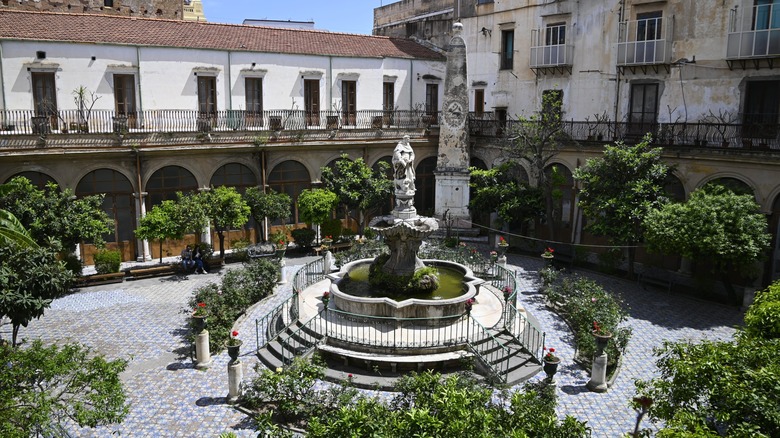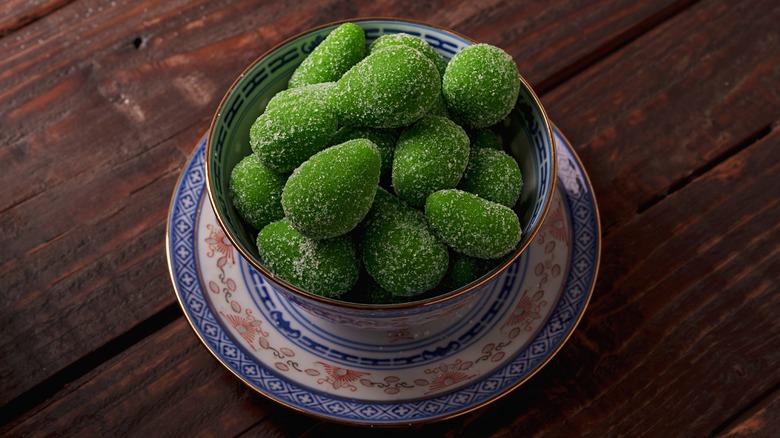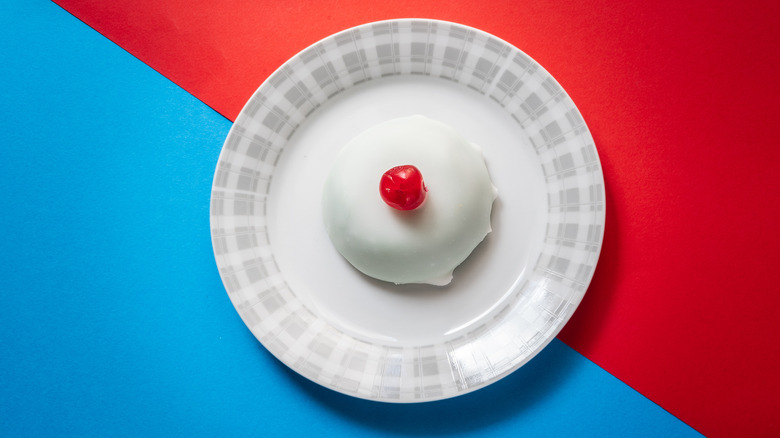This Palermo Cloister Uses Centuries-Old Secrets To Make The Most Delicious Pastries
Palermo is a city full of secrets. The largest city in Sicily and fifth largest city in Italy is a labyrinth of streets — some very, very narrow — leading to unexpected sights and delicacies. Turn a tiny corner and stumble upon a magnificent palazzo. Enter a nondescript door and have the best pasta of your life. But perhaps one of the best secrets in Palermo is a well-known one. Called I segreti del chiostro (translated as "the secrets of the cloister") is both a bakery and a cultural project operating from the Santa Caterina monastery, located in Piazza Bellini in the historic Kalsa neighborhood. There, you can get the most incredible pastries made from very, very old recipes passed down by the nuns who used to bake there.
Visiting Santa Caterina is now a popular tourist activity for visitors to Palermo. Known as both a bakery and a museum that houses religious artifacts telling the story of Palermo's cultural and spiritual past, Santa Caterina is an adventure for all the senses. Though nuns no longer work there, you can watch bakers stuff cannolis and prepare other types of regional pastries. There's usually a bit of chaos, but that's part of the experience. Wait in line and then take your pastry to the courtyard to eat underneath the shade of the citrus trees. After all, these recipes were almost lost — it's a miracle you can get them today.
Sweets made by recipes passed down by nuns
The resurrection of these recipes and their sale is the result of a labor of love, tied intimately to the larger project of Sicilian historical and cultural recuperation. Their story begins in the 1300s, when the Monastery of Santa Caterina was established as a hospice and housed Dominican nuns from wealthy, noble families. The hospice eventually closed and a bakery opened. It was not unusual for a monastery to have a working bakery on premises, as money from the sale of baked goods was an important source of income for the upkeep of the monastery. Nuns were often masters at their craft, and the nuns of Palermo were skilled in creating baked goods and desserts. With the introduction of white sugar in the 15th century, nuns were able to make more pastries than ever before — and get more creative with their art.
In 2014, the nuns left the monastery for good. But what happened to all their recipes — years of oral instructions for some of Palermo's most desired pastries? Enter Maria Oliveri, a historian who worked to collect recipes from the 21 cloistered monasteries in Palermo throughout its history and establish the project that became I segreti del chiostro. Santa Caterina reopened in 2017 as a bakery and museum, with secret recipes brought back to life. "Many tourists come to visit us, addressed by pastry chefs, who advise them to come here to rediscover the origins of Sicilian confectionery," Oliveri told Gambero Rosso International.
What desserts can you get at the cloister?
One look at I segreti del chiostro's offerings will tell you why people make this dessert pilgrimage. Visitors will be familiar with the cannolis, but there are a multitude of desserts from throughout Sicily's history that are just as spectacular – some you've probably never heard of.
There are various types of biscotti, or cookies, such as pantofola al pistachio, pasticciotto del paradiso, erbanetti with its pistachio center, and lemony pantofola. There are traditional marzipan candies in the shape of fruits called martorana. There are almond and pistachio confections such as panino di Santa Caterina and olive di Sant'Agata (or, olives of Saint Agatha). And there is a special cake that can be referred to as cassatella di sant'Agata or minne di Sant'Agata (or the love of Saint Agatha).
Saint Agatha is an important protective figure in Sicily, and her torture (including the severing of her breasts) and martyrdom is celebrated. The minne is a treasured dessert that celebrates fertility and motherhood while also honoring Agatha's sacrifice. This round dessert is meant to look like a breast, complete with a cherry nipple. It's made with an icing coated marzipan outer shell and an inside sponge cake filled with sheep's milk ricotta cheese. You can include chocolate chips and dried citrus peels in the ricotta filling. Some bakers also soak the cake in Rosolio, an Italian liqueur. At I segreti del chiostro, your dessert is made with love and history.


